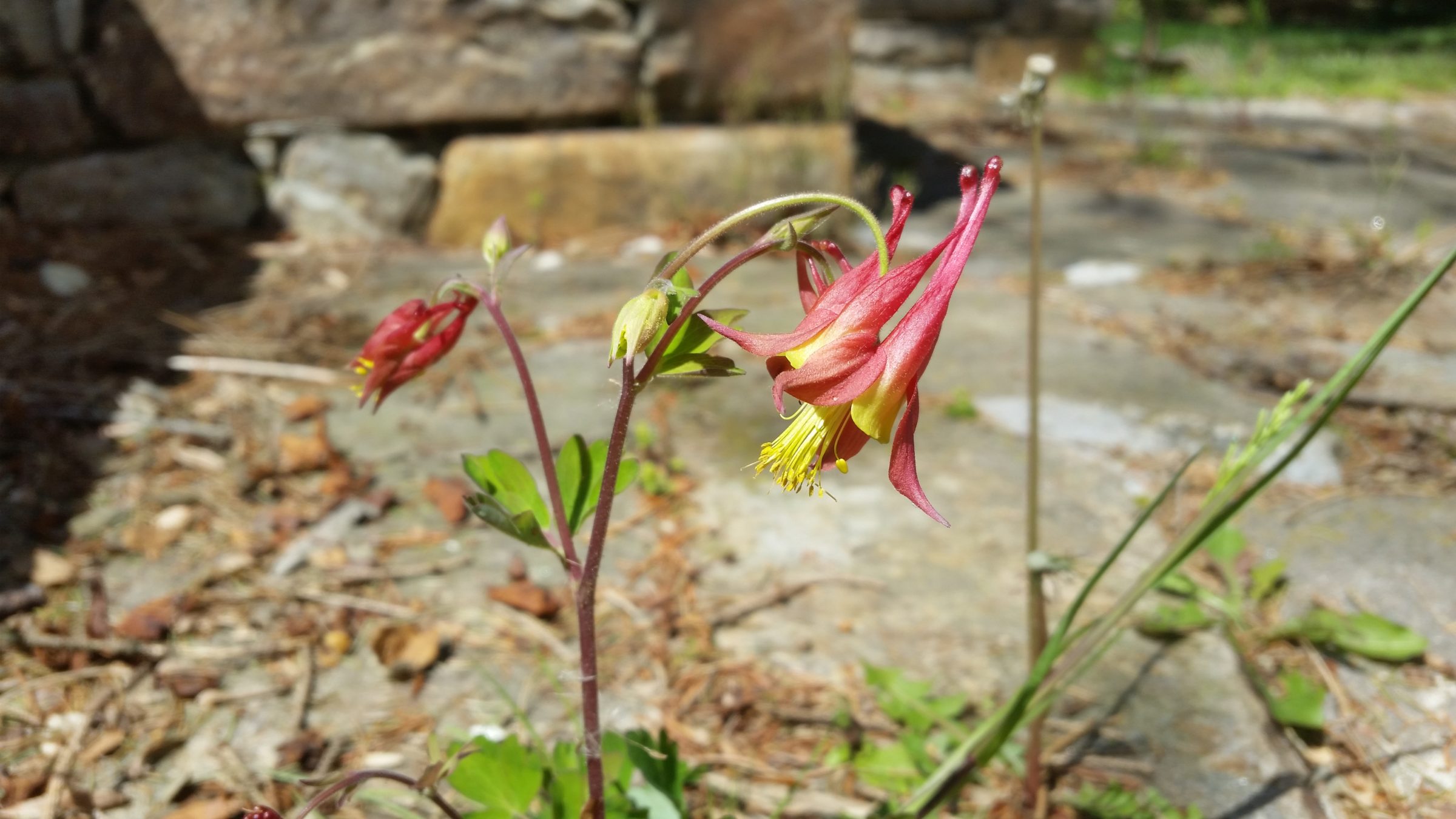Aquilegia canadensis
Aquilegia canadensis (ack-wi-LEE-gee-uh kan-uh-DEN-sis)
Wild Columbine
A naturally graceful woodland plant, this straight species of Wild Columbine reseeds in the most unusual places. The plant is often found growing in cracks and crevices of the forest’s herbaceous layer, or perhaps in the crack of your patio.
When choosing Aquilegia species, consider that the cultivars are much more prone to Columbine leafminer than the straight species, A. canadensis. The cultivars will also revert to the straight species.
Origin:
Aquilegia – From the Latin aquila (eagle), alluding to the petal form of the flower.
canadensis – Latin originating from Canada or North America.
Family – Ranunculaceae
Nativity – Central and Eastern United States
Hardiness – USDA Zones 3-8

Aquilegia canadensis growing in a crack of a patio
Description:
Form – Soft, graceful and delicate. A fine textured plant with mounded foliage to 1′ with several erect stalks reaching 2′ or more, prominently branched.
Foliage – Both biternate basal leaves and alternate ternate leaves on branched slim stems. Leaves become reduced further up the stalk. The small leaflets of 3 are oval and have rounded lobes. Soft textured with grey-green undersides.
Flower – The flower resembles an eagle’s claw, exhibiting spurs as it nods at the end of a long branch. There are a number of stamens that are projected past the petals and sepals. You can enjoy this flower from April through May, depending on the amount of shade it receives.
Fruit – 5 upright follicles containing purple fruit that have curved tips.

Culture:
Light – The more shade the better, but Wild Coumbine will tolerate sun and average soil.
Soil – Observe where Aquilegia reseeds. The plant needs well-drained, humusy soil.
Propagation – Seed and division in spring.
Problems – Leaf spot, spider mites, crown rot, aphids, and most prominent the Columbine leaf miner.
Landscape Use: Use in woodland settings, for naturalizing, or for shade beds and borders.
Ecological Benefit: Long-tongued nectar feeders like hawk moths and hummingbirds use this plant for sustenance.
Comments: Allow this plant to naturalize to capitalize on the unique places it likes to reseed. If this is undesirable, deadhead before Wild columbine is allowed to go to seed.
Cultivars:
A. canadensis ‘Canyon Vista’
A. canadensis ‘Corbett’
♥ Find Wild Columbine at Newmoon Nursery, located in New Jersey.


